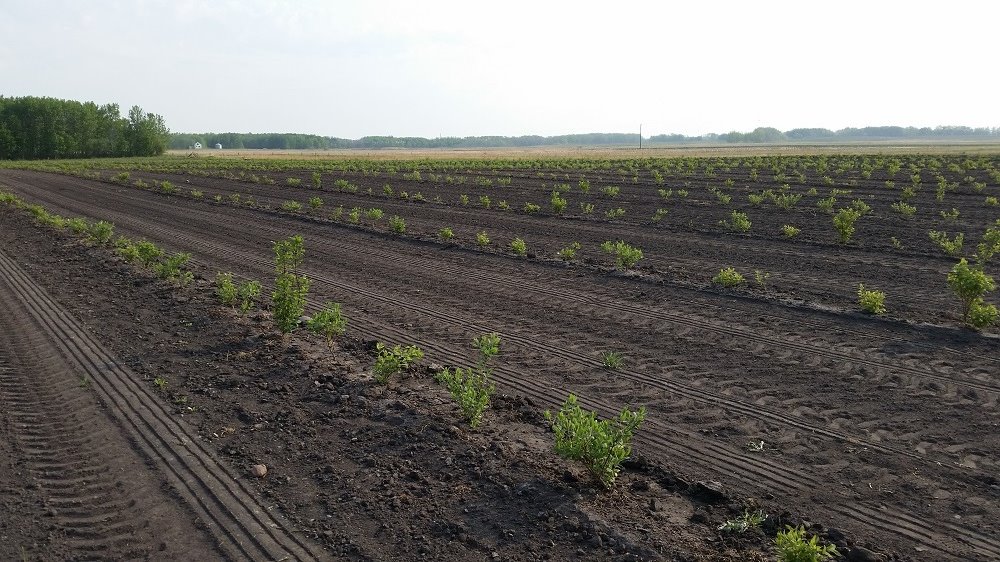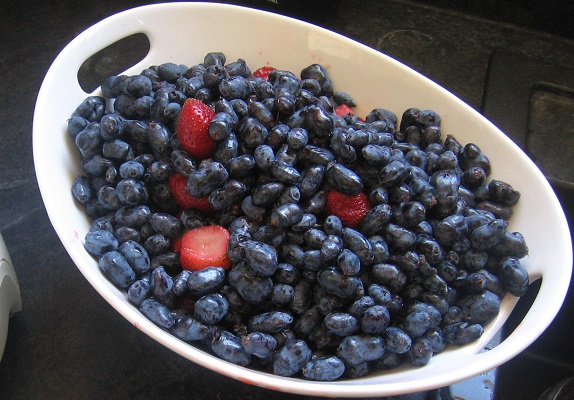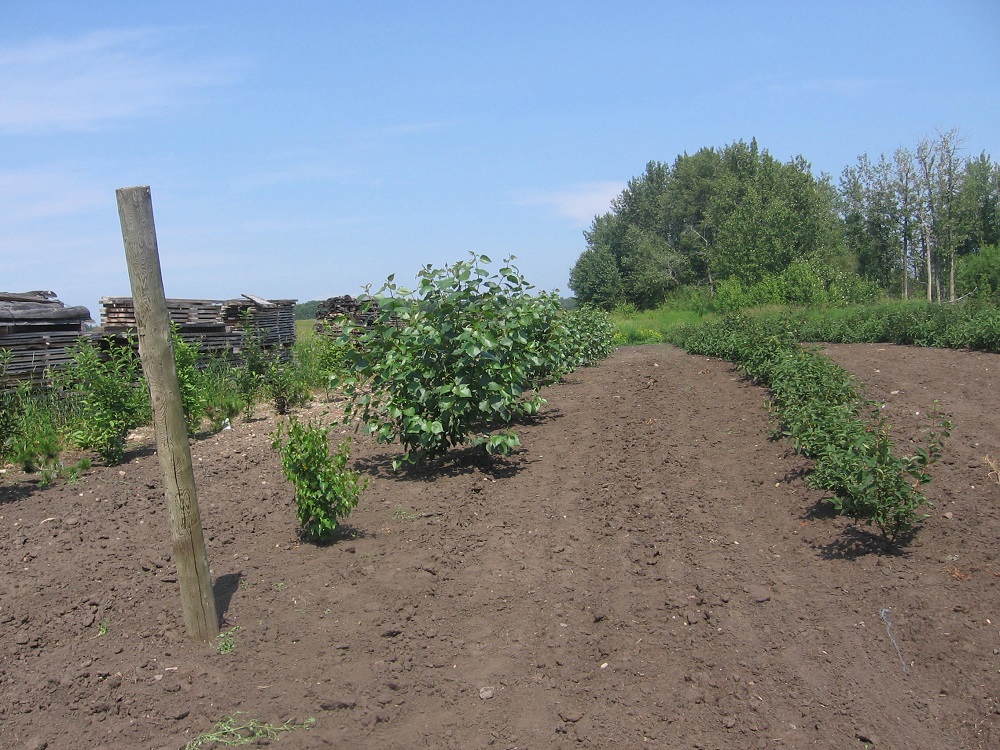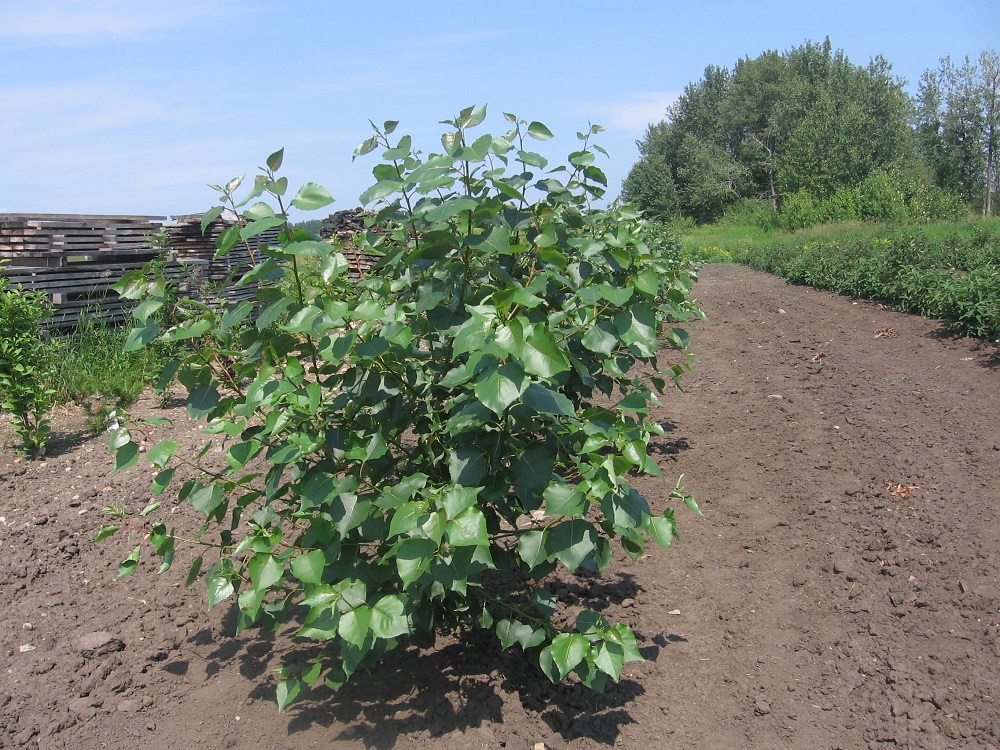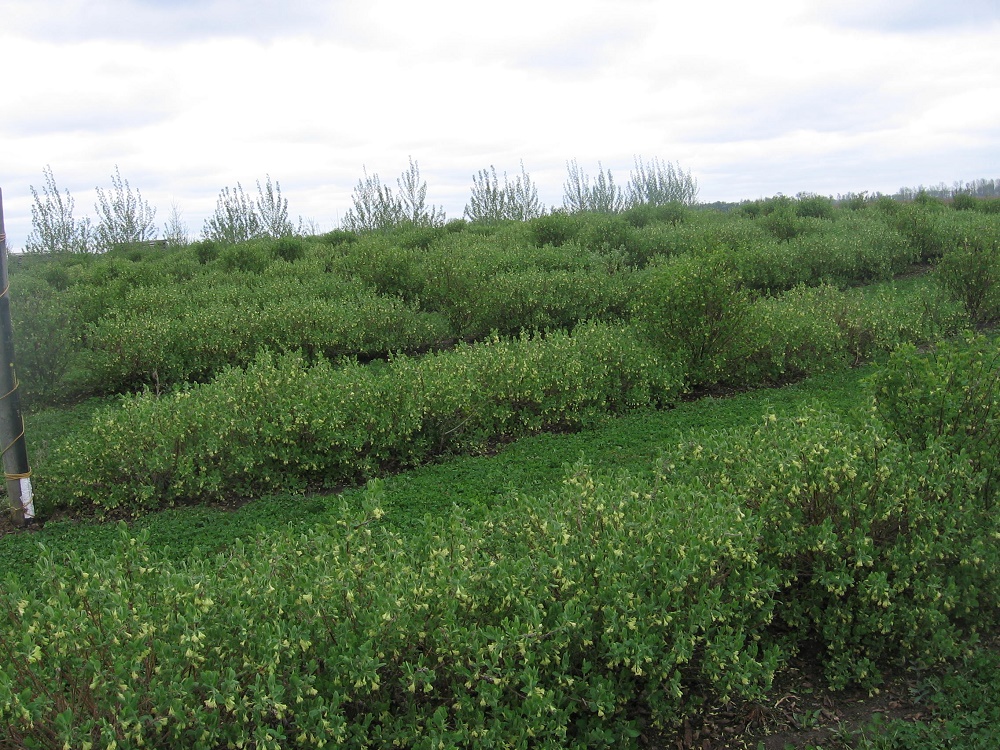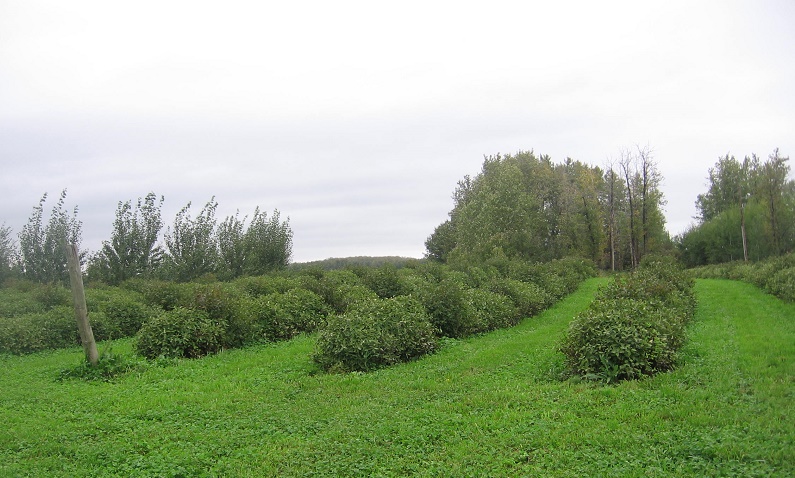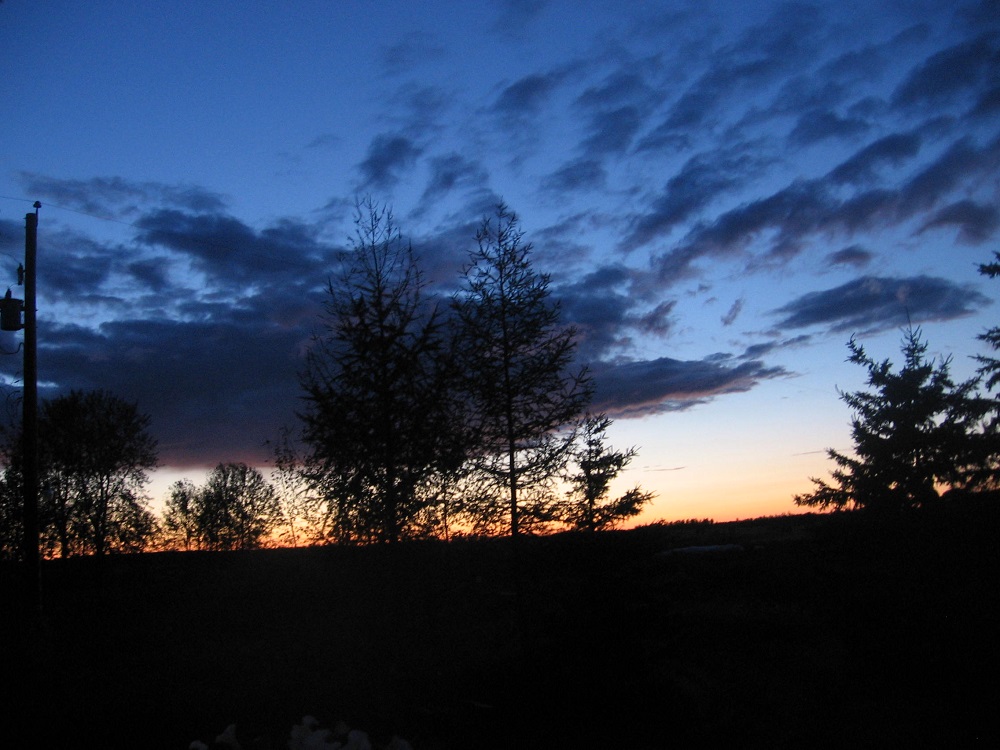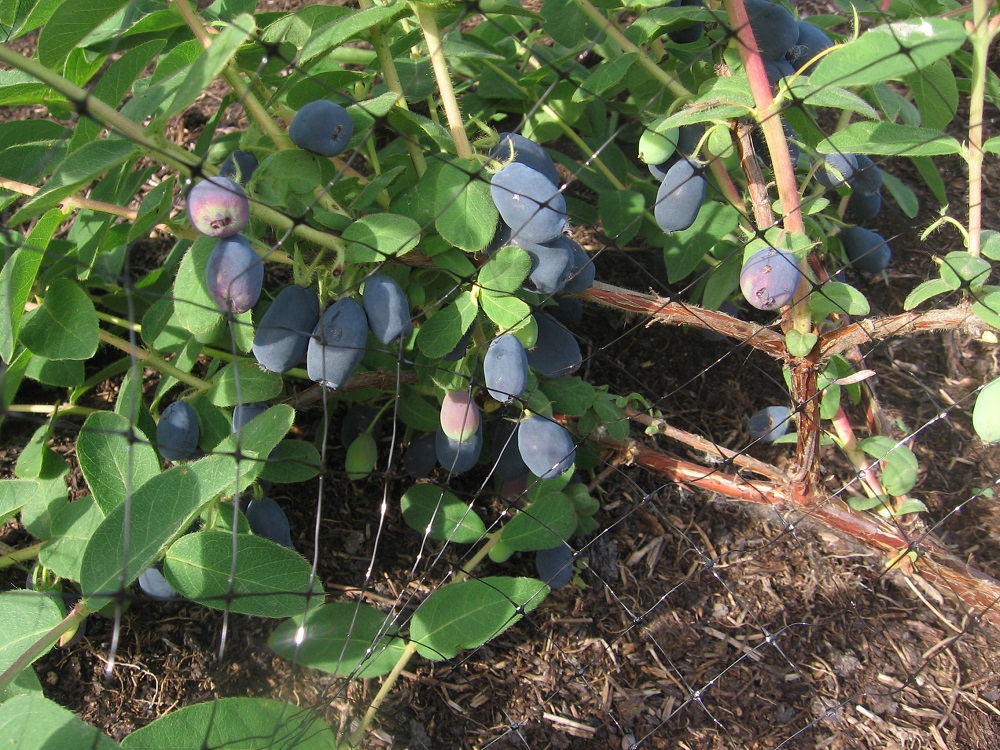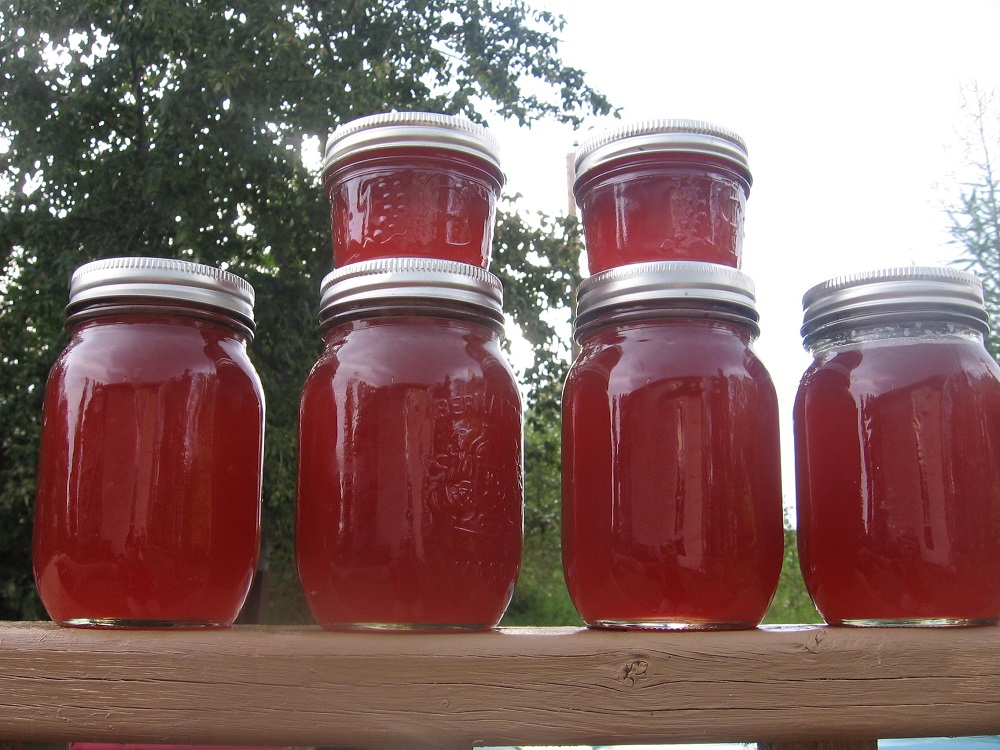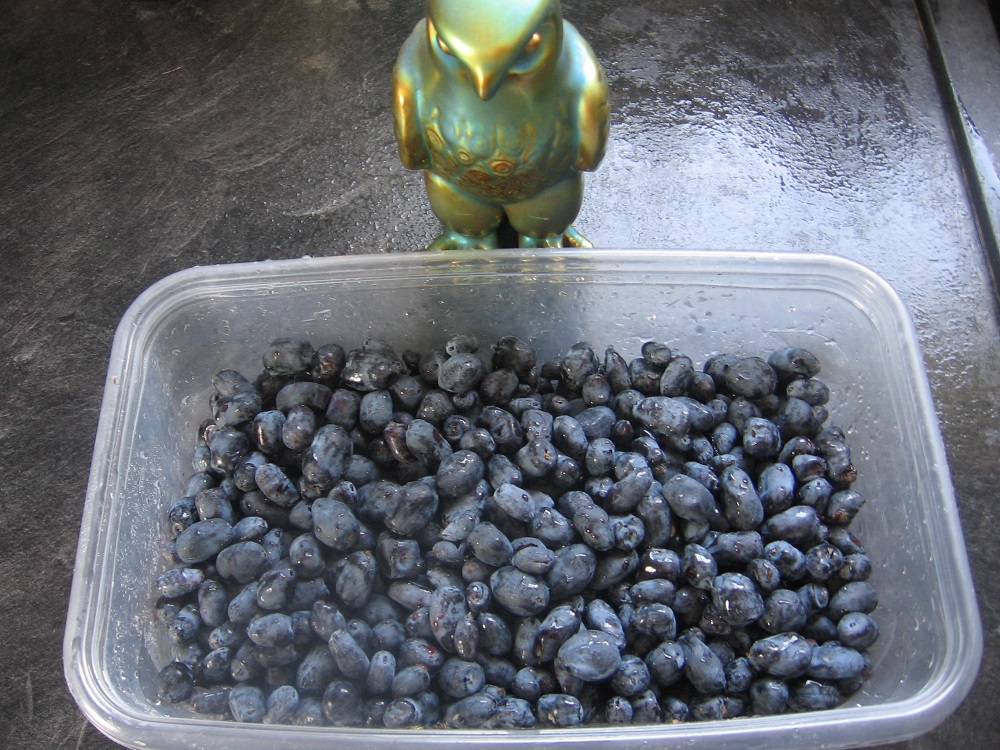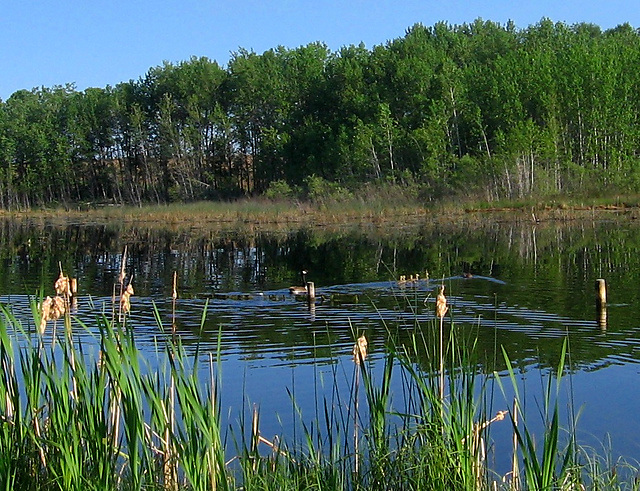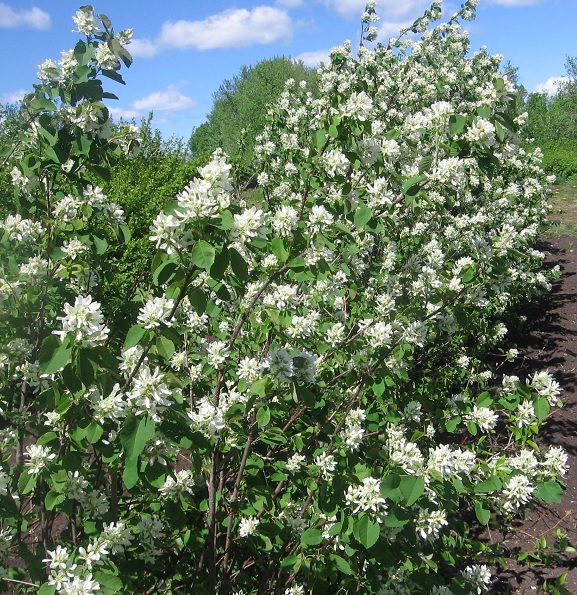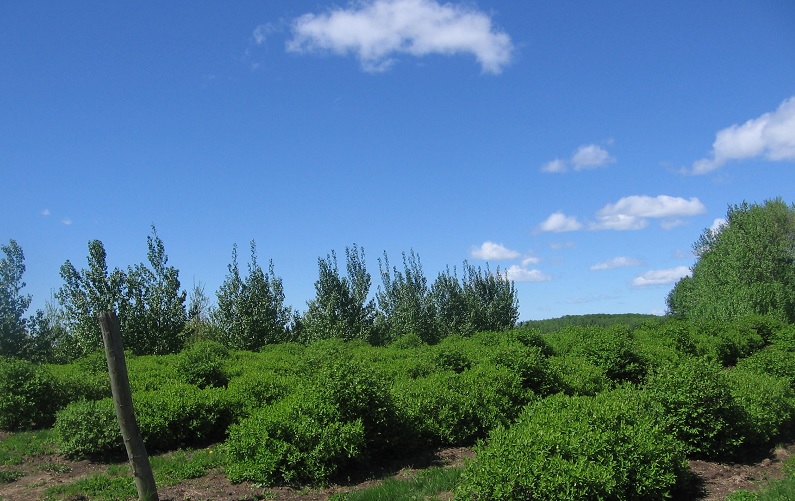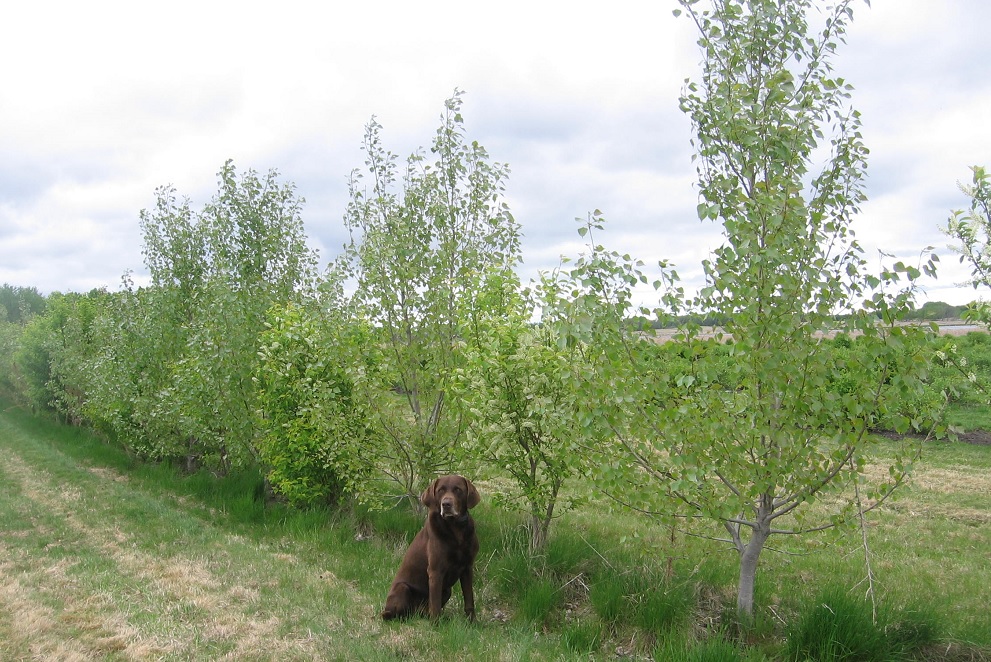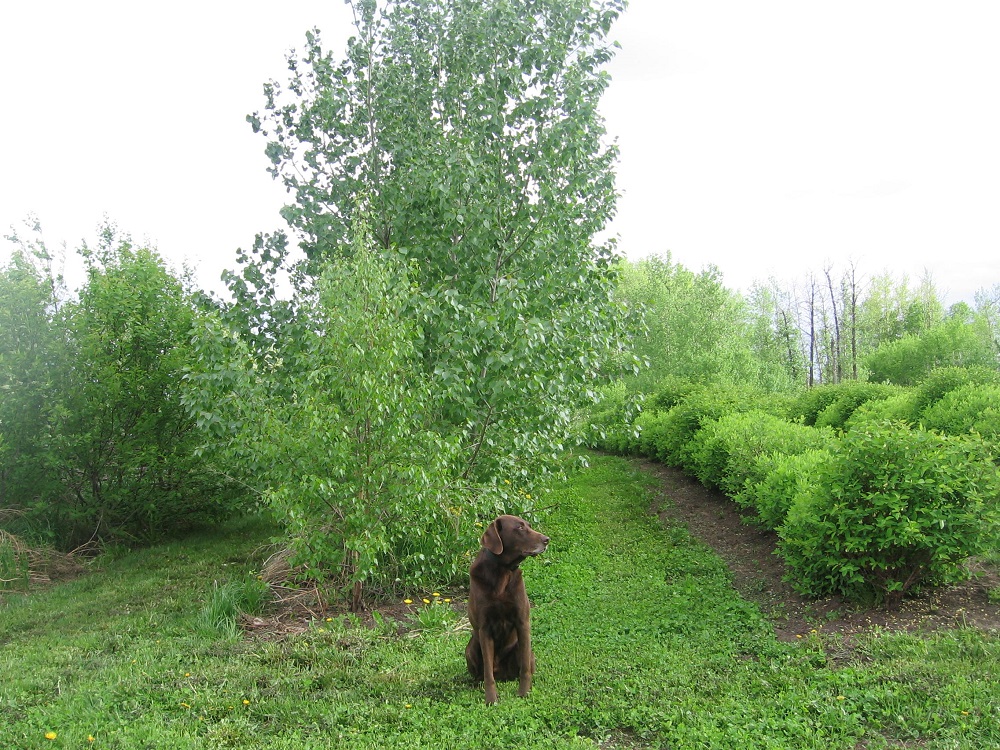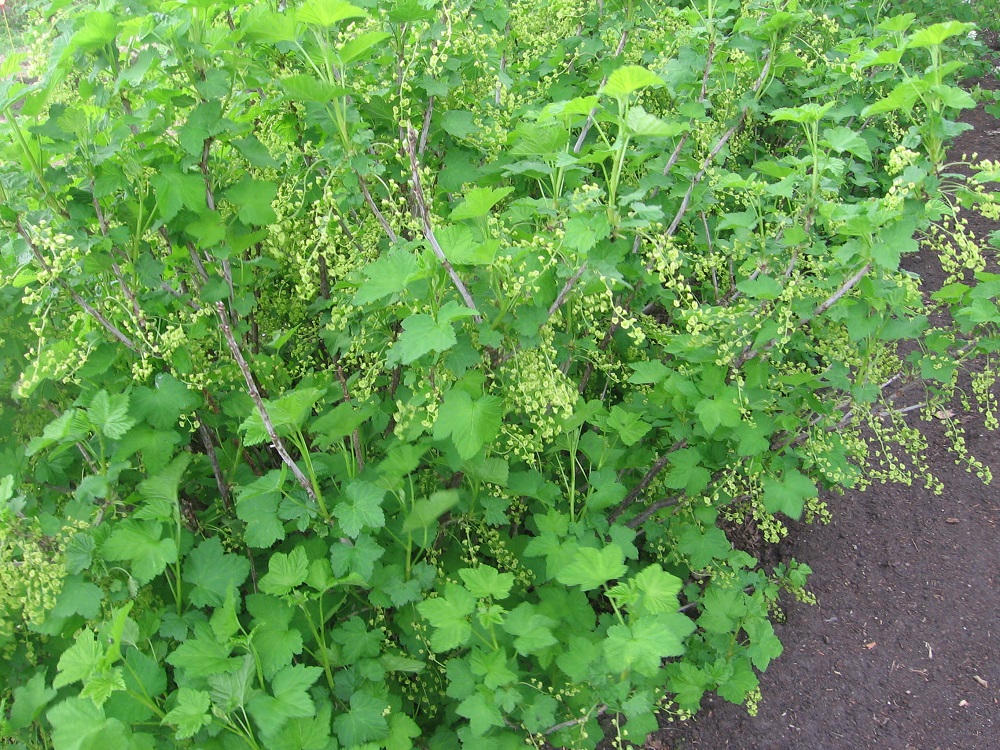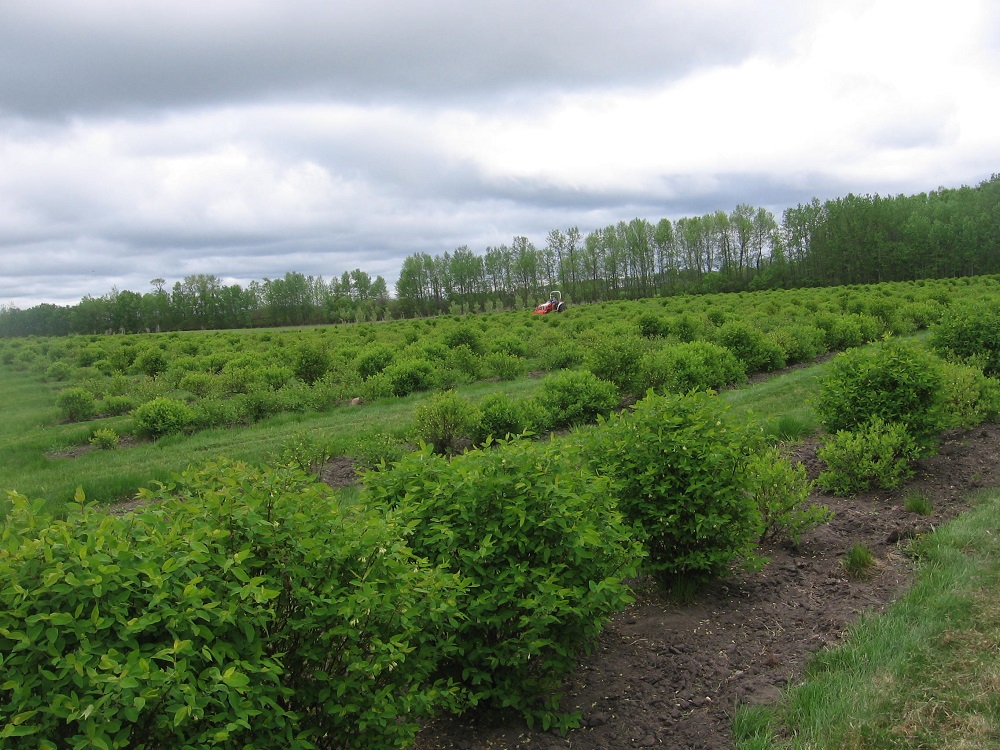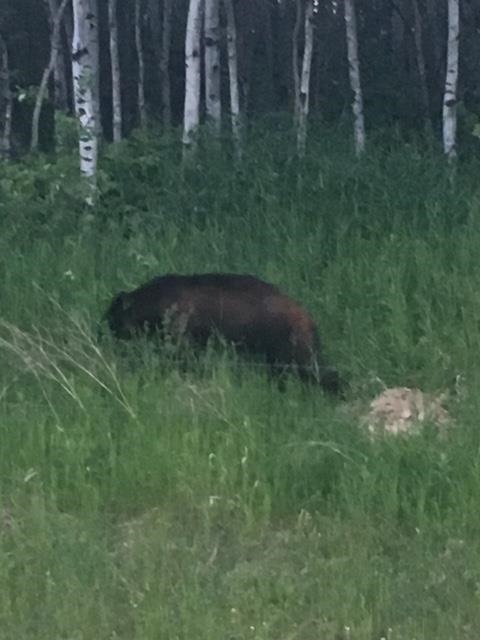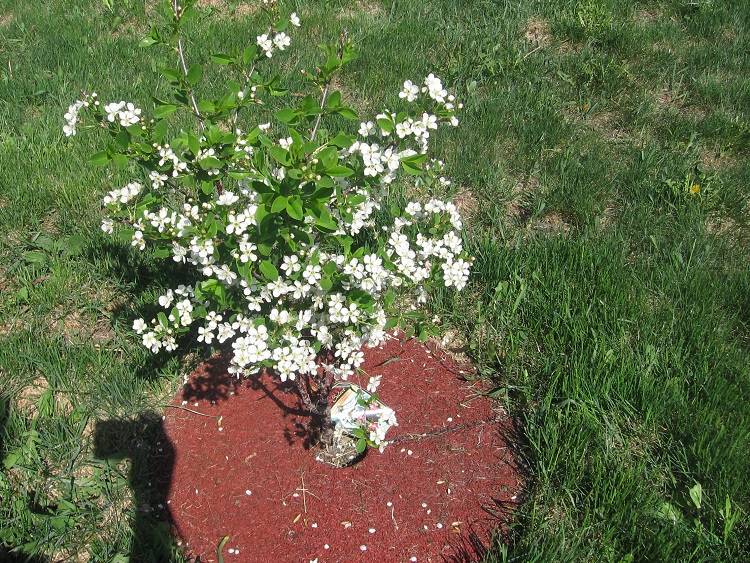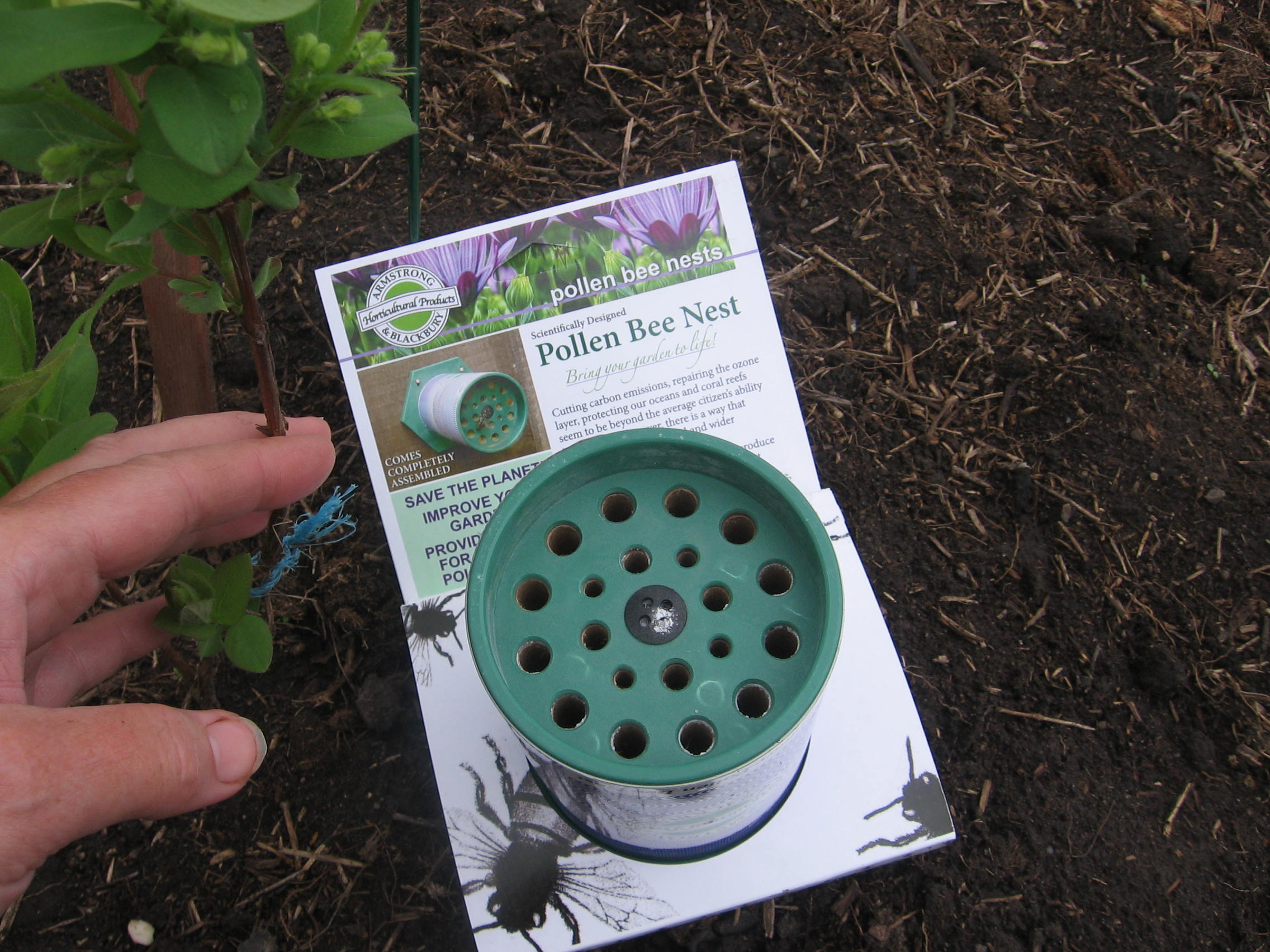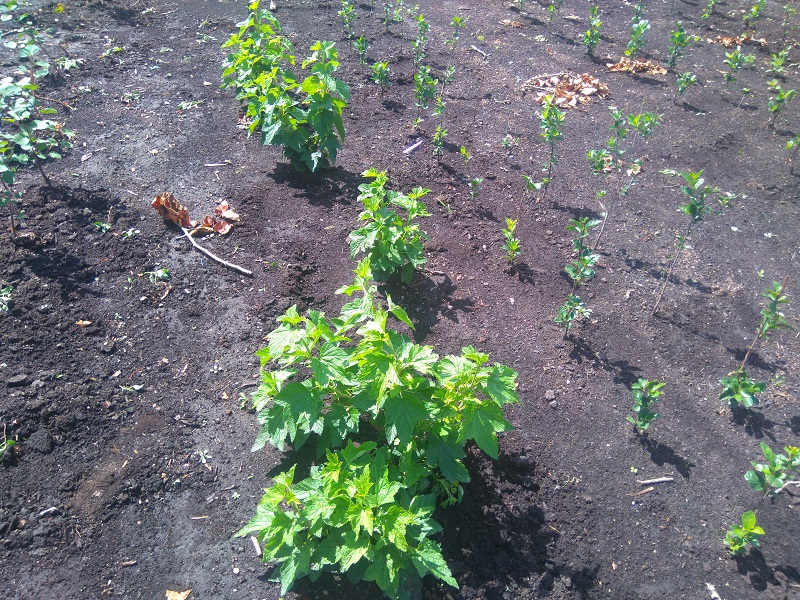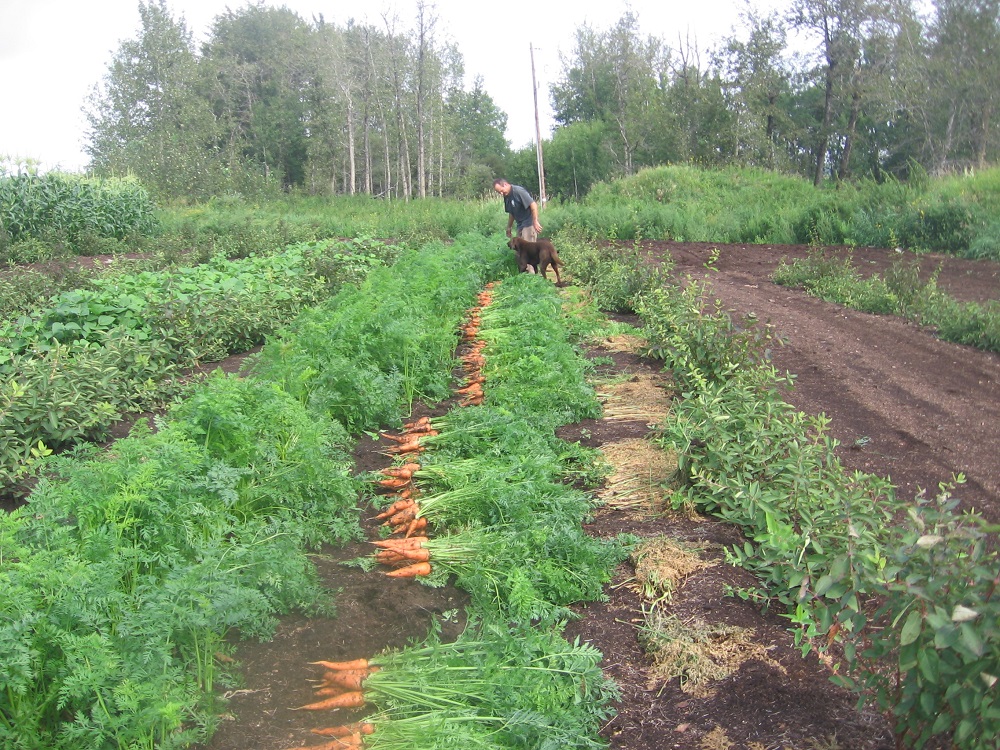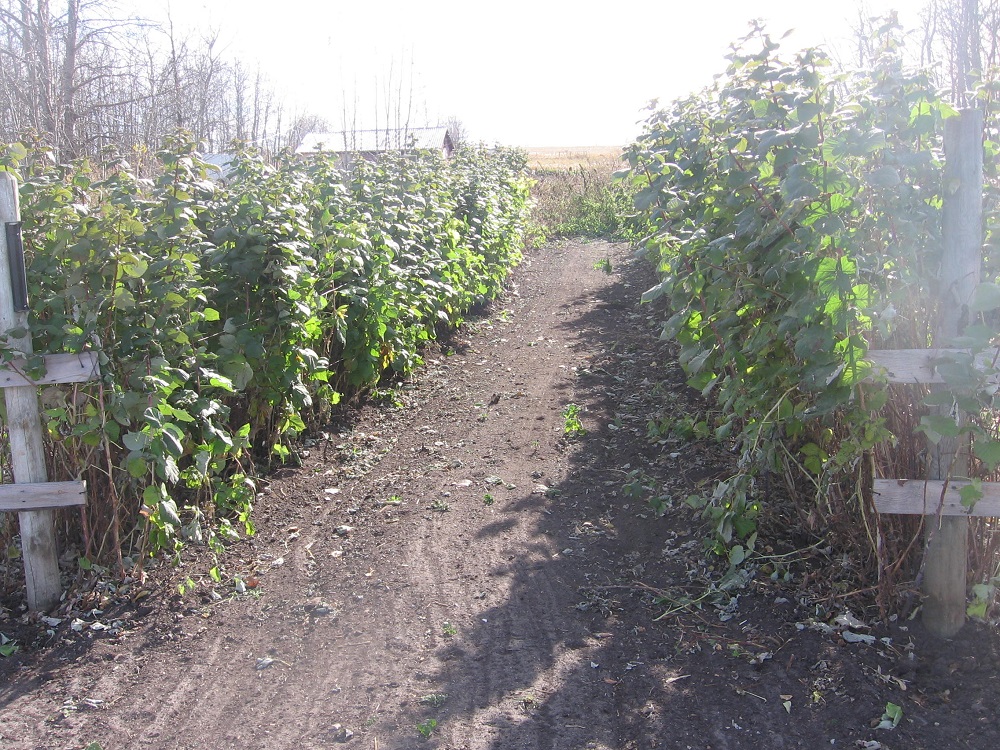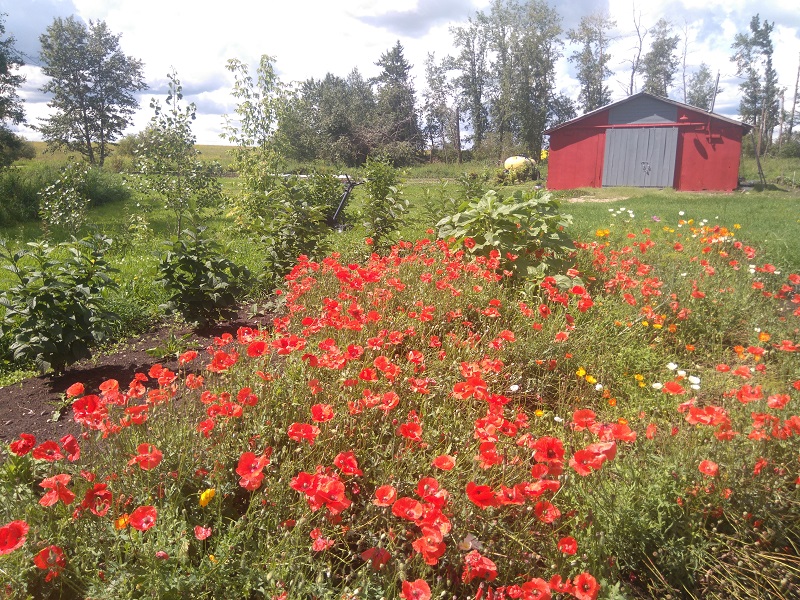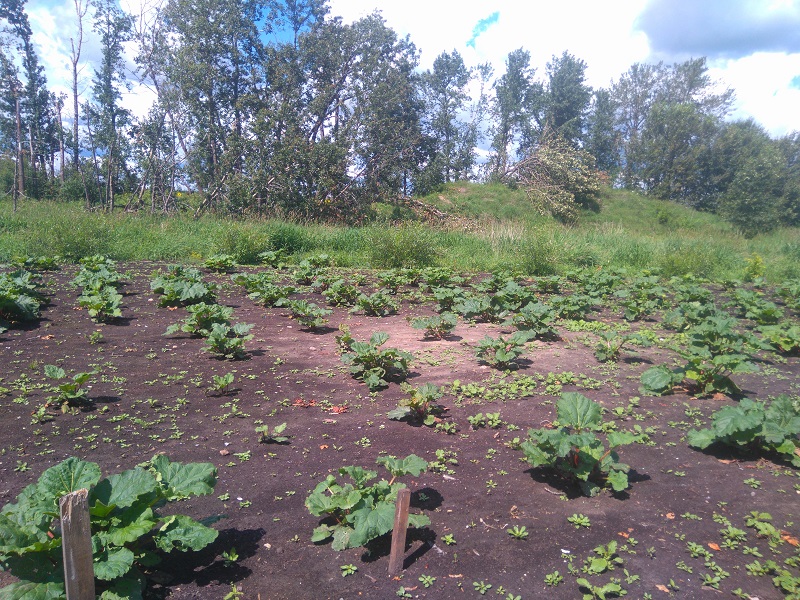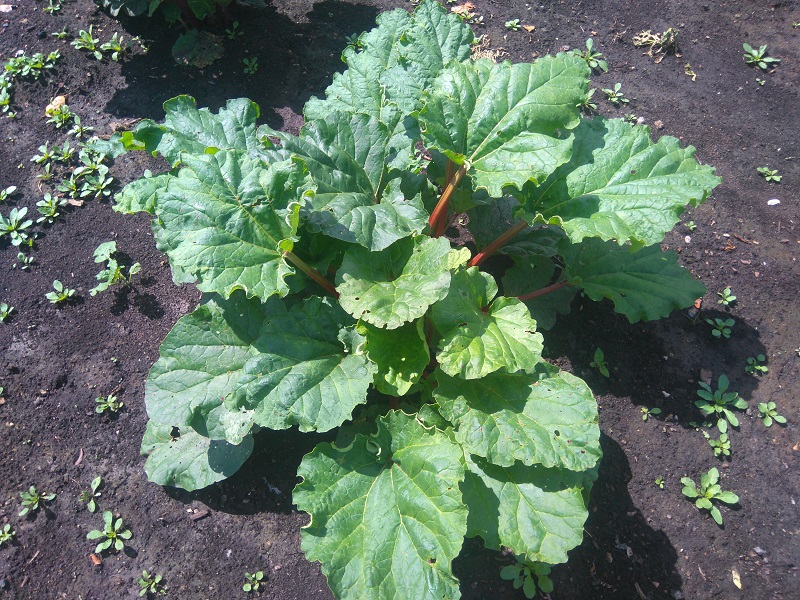Bee & Thistle Berry Orchard, The Haskap/Fruit Farm
Bee & Thistle Berry Orchards started with their first planting of 10,000 bushes of Haskap (also called Honeyberry), with varieties of Indigo Gem, Tundra and Smart Berry Blue. In 2016, Aurora was added to the lineup. Since the production in the initial years is small, the orchard held informal You Picks and traded the first crops for other goods. In 2018, we harvested 6,400 pounds of Haskap from the main two orchards, fondly known as Home Acre (which houses 700 plants) and North Orchard (which holds over 9,000 plants). The berries are frozen, awaiting the license to manufacture them into wine in early 2020.
All work in the orchard is done as sustainably as feasible so as to protect the soil and plants, as well as the surrounding environment. We cultivate extensively in the rows, and put down cardboard/plastic to control the weeds in the treelines. Water from the adjacent ponds is used for irrigation when necessary. Soil was tested bi-annually and amendments applied as required in the early years. In 2019, a program of tissue testing and subsequent amendments was begun. Compost tea was liberally applied in the first two years, which promoted plant health, created a bio-friendly soil, and dramatically increased fruit production. The soil is now fertile, pliable and healthy. The inter-rows were planted with a mix of red fescue and dwarf Dutch white clover, which reduces erosion, provides a nice base for the tractor to ride on and is aesthetically pleasing.
In 2018, we added an acre of Rhubarb and several dozen Black Currant bushes to the lineup. Our brother orchard, Ravensfield Farm, will be growing Dwarf Sour Cherries, varietal Carmine Jewel. 1,000 of Ravensfield’s trees were planted on Bee & Thistle nursery property to gain strength before being transplanted to Ravensfield, however, the winter of 2018-2019 was too cold for the young plants. Many of them died, however, the remaining ones will be kept at the nursery until the spring of 2020. For those ones, we hope that year three will have them producing enough of a harvest to make Cherry wine and liqueur.


